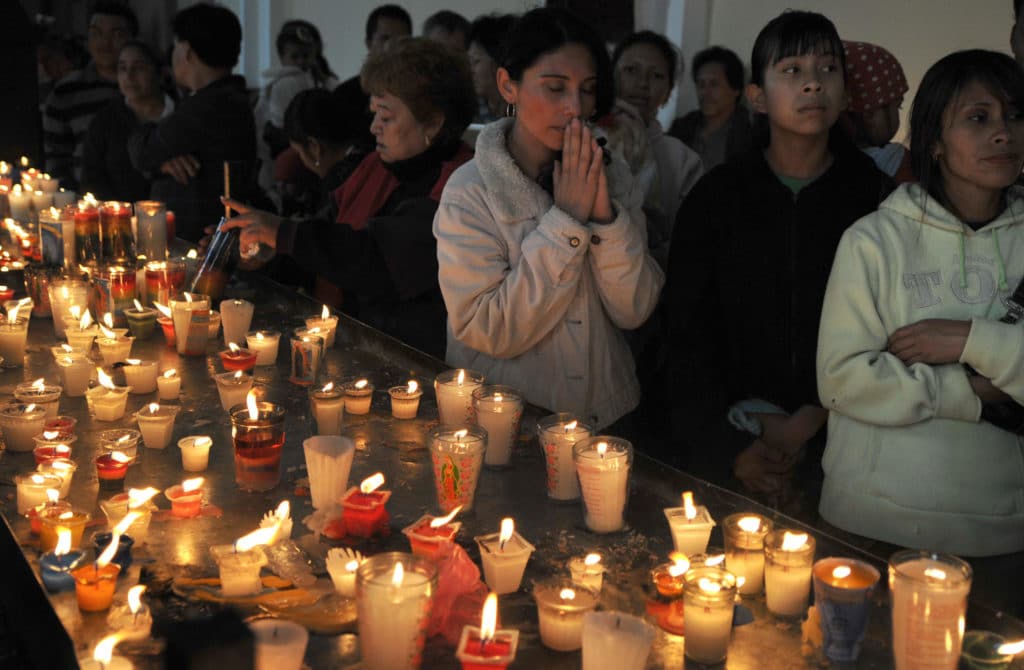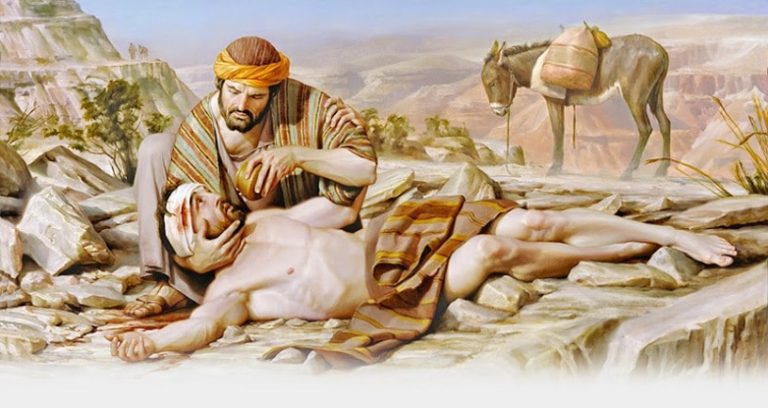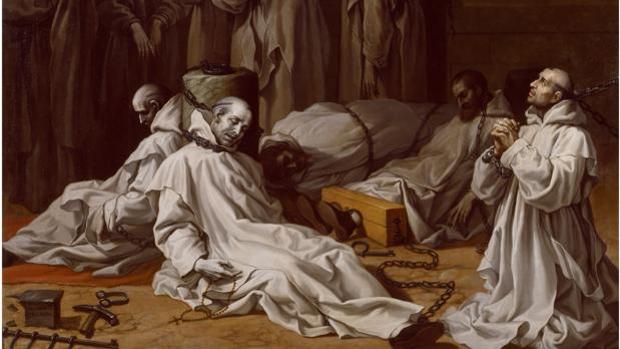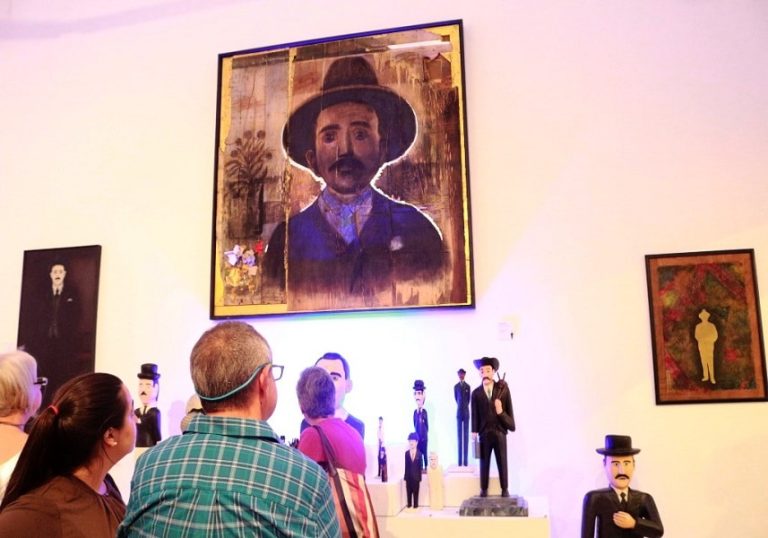Mass responses: guide, texts and prayers
The Responses of the mass constitute the participation and commitment that each faithful has when attending the Eucharist, each response of the believer is a participation of gratitude to God, learn more about this topic by reading the following article.
Mass responses
The mass does not represent a ceremony for strangers, it is considered the most important moment to come into contact with God, it does not matter if the person belongs to another religion, or simply does not believe in Catholicism, the invitation of the Church to attend the mass is open to all
Participating in ecclesiastical activities allows the faithful to be constantly integrated into the Eucharist, the responses in the mass allow establishing the connection with God, knowing the path that leads to peace, reinforcing faith and promoting goodness among all Christians.
The participation of the faithful is promoted in the church through the responses to the mass, which can be many, among the most important are those that are made at the time of saying the prayers of the novena mass , ejaculatory prayers or prayers, in they are answered by those present at mass, and are considered part of the ceremony
There are other responses to the mass that the faithful can make, and it turns out that when it is necessary to read the word or participate in Sunday activities, many faithful are dedicated to responding to the help requested by the priests to organize the Sunday ceremony.
We know that worldwide, Catholics attend Sunday mass in their millions , go to the house of God to ask for forgiveness, ask for help, praise him or simply ask for peace in the world, these responses to the mass allow each Sunday to consolidate the Catholic foundations of the Church. And make it the largest spiritual movement on the planet.
The responses of the Catholic mass are a commitment of devotion and submission to God, the mass is elaborated in order to establish the connection with the creator, when we respond by saying amen or say some spiritual phrase after a prayer or praise to God, we are connecting our soul with the lord, the responses to the mass have to be done with true devotion.
When you go to the house of God, do it with passion and seek to understand that you do it with faith and devotion, respond with allergy and dedication, because God is listening to you and waiting for you to respond in the same way as he responds to you, to through love
Below we will see some examples of how the responses of the mass are, from its beginning to the end of the ceremony.
Participatory responses and texts
It consists of making oral responses after a prayer or ecclesiastical ceremony during mass. We will describe below the process of how the Eucharist is performed and how the faithful respond.
welcome and greeting
The ceremony begins with the welcome words of the priest who receives the faithful and little by little leads them towards the development of the mass, the beginning is very exciting, people are waiting, after welcoming the priest begins .
He then proceeds to present to God the gifts of bread and wine, which will enter the body of the Lord through the Consecration, then become the Body and Blood of the Lord, this moment is called the ‘Offertory’.
Priest (S) In the name of the Father, and of the Son and of the Holy Spirit. Response of the faithful (R): Amen.
S: The grace of our Lord Jesus Christ, the love of the Father and the fellowship of the Holy Spirit be with you.
A: And with your spirit.
Then the father invites everyone to sit down. After offering the Bread the Priest says:
“Blessed are you, Lord, God of the Universe, for this bread, fruit of the earth and the work of man, that we received from your generosity and now we present to you: it will be for us bread of life.”
A: Blessed are you, forever, Lord.
He continues with the action of adding a little water to the wine, which can be done by the deacon or the priest himself, and says the following:
S: Water mixed with wine is a sign of our participation in the divine life of those who have wanted to share our human condition. Blessed are you, Lord, God of the Universe, for this wine, fruit of the vine and the work of man, which we received from your generosity and now we present to you: it will be for us a drink of salvation.
A: Blessed are you, forever, Lord.
Then the priest bows and says quietly.
S: Accept, Lord, our contrite heart and humble spirit; May this be our sacrifice today and may it be pleasant in your presence, Lord our God. Wash away my crime, Lord, cleanse my sin.
Then he goes to the center of the altar and says the following:
S: Pray, brothers, so that this sacrifice of mine and yours may be pleasing to God, the almighty Father. (Invite the faithful to stand up)
The faithful respond:
A: May the Lord receive this sacrifice at your hands, to the praise and glory of his name, for our good and that of all his holy Church.
prayer of offerings
If offerings are made that day, the respective prayer is made, then it continues with the Eucharistic prayer, which consists of a prayer where the father invites everyone to pray together.
S: The Lord be with you.
A: And with your spirit.
S: Let’s raise our hearts
A: We have it lifted up to the Lord.
S: Let us give thanks to the Lord our God.
A: It is fair and necessary.
Then the priest reads the respective preface for Sunday and the faithful respond.
A: Holy, Holy, Holy is the Lord, God of the Universe. Heaven and earth are full of your glory. Hosanna in heaven. Blessed is he who comes in the name of the Lord. Hosanna in heaven.
Then continue the prayers and prayers prior to the consecration. An Our Father is prayed, then the priest invites the faithful to kneel in order to perform the consecration and proceeds to say the following.
Consecration
S: All of you take and eat of it, for this is my body, which will be given up for you.
He continues with the consecration of the wine saying the following:
S: Take and drink from it, all of you, because this is the chalice of my blood, the blood of the new and eternal covenant, which will be poured out for you and for all men for the forgiveness of sins. Do this in memory of me.
S: Jesus Christ the Priest, using the words of the Consecration pronounced by the priest, turns the bread into his Body and the wine into his Blood.
The priest shows the faithful the consecrated host and the Chalice, then makes the sign of the cross in the air and says.
S: This is the sacrament of our faith. Or you can also say “This is the mystery of faith.”
He continues by inviting the faithful to stand up and they say the following:
A: We announce your death, we proclaim your resurrection. Come Lord Jesus!
They can also say “Hail the Mystery of redemption.”
A: Every time we eat of this bread and drink of this cup, we announce your death, Lord, until you come back. Christ gave himself for us. By your cross and resurrection you have saved us, Lord.
The prayers corresponding to each prayer, the Hail Mary or the creed are then performed, a Glory can also be included, during the prayer the priest takes the paten, together with the consecrated host, the chalice and holding it in his arms and raising it says:
S: Through Christ, with him and in him, to you, God the Father Almighty, in the unity of the Holy Spirit, all honor and glory for ever and ever. Amen.
communion
The communion ceremony then continues after the priest has placed the chalice and wafer on the paten, pronounces the following:
S: Faithful to the recommendation of the Savior and following his divine teaching, we dare to say, Filled with joy for being children of God, let us confidently say the prayer that Christ taught us, The Love of God has been poured into our hearts with the Holy Spirit. Holy that has been given to us; let us say with faith and hope:
S: Before participating in the Eucharistic banquet, a sign of reconciliation and a bond of fraternal union, let us pray together as the Lord has taught us:
A: The faithful and all those who are in the church pray an Our Father
At the end the priest extends his hands and says:
S: Deliver us from all evil, Lord, and grant us peace in our days, so that, helped by your mercy, we may always live free from sin and protected from all disturbance, while we await the glorious coming of our Savior Jesus Christ.
A: Yours is the kingdom, yours the power and the glory, forever, Lord.
With hands still outstretched, the priest reiterated the following:
S: Lord Jesus Christ, who said to your apostles: ‘Peace I leave with you, my peace I give to you’, do not take into account our sins, but the faith of your Church and, according to your word, grant her peace and unity. You who live and reign for ever and ever.Amen.
Then the priest puts his hands together and says out loud:
S: The peace of the Lord be with you always.
A: And with your spirit.
S: Brotherly grant peace.
Then all those present proceed to grant each other peace, those who are closer, some kiss each other on the cheeks, others simply use the phrase “Peace be with you”, this small ceremony lasts between 3 and 5 minutes depending on faith and dedication. of each participant as well as the number of faithful in the mass.
This process represents one of the most beautiful responses to the mass, where fraternity and union are present in order to demonstrate and respond to God that we are his children, that we feel his love and that we are full of faith.
At the end of the peace, the priest places part of the host in the chalice and says in secret.
S: The Body and Blood of Our Lord Jesus Christ, united in this chalice, be for us food of eternal life.
The faithful proceed to sing a song related to the gospel, generally performed by a choir or small groups of young people who collaborate with the activities of the Church and have musical conditions, among the songs the most used is “The Lamb of God” that you remove the sin of the world, ending with “Give us peace”.
The priest secretly prays the following prayer related to communion.
S: Lord Jesus Christ, the communion of your Body and Blood is not for me a reason for judgment and condemnation, but, by your mercy, take advantage of me for the defense of soul and body and as a healthy remedy.
S: Lord Jesus Christ, Son of the living God, who by the will of the Father, with the cooperation of the Holy Spirit, gave life to the world with your death, deliver me, through the reception of your Body and Blood, from all my faults and from all wrong. Grant me to always fulfill your commandments and never allow me to separate from you.
The priest takes the consecrated bread, raises it up and shows it to the people, saying:
S: This is the Lamb of God, who takes away the sin of the world. Blessed are the guests at the Lord’s supper.
Say all those present at mass and the priest.
S and R: Lord, I am not worthy that you enter my house, but a word from you will be enough to heal me.
The priest communes with the body and blood of Jesus, and proceeds to read the Communion Antiphon corresponding to that day, it is always related to the date and Catholic calendar. He turns to the people who are going to take communion that day and says.
S: The Body of Christ.
The response of the one who receives the host and takes communion is only “Amen”. Later the father invites the faithful to kneel and the priest cleans the paten and the chalice saying in a low voice.
S: Make, Lord, that we receive with a clean heart the food that we have just taken, and that the gift that you give us in this life takes advantage of us for the eternal.
The priest goes to the seat and sits down, meditating there for a few seconds, some even sing a psalm or praise. He gets up after the meditation and invites everyone to pray.
The priest performs the prayer of the day and at the end the people simply verify it and acclaim saying “Amen”.
final ceremony
The priest makes the announcements and warnings to the people, some take the opportunity to give a homily, then he extends his arms and says.
S: The Lord be with you.
A: And with your spirit.
S: The blessing of almighty God, Father, Son and Holy Spirit, descend upon you. (everyone crosses themselves)Amen.
And to dismiss the faithful the deacon or the priest himself says.
S: You can go in peace.
A: Let us thank God.
To end the ceremony, the priest kisses the altar in the same way as he did at the beginning and retires to the sacristy, the Catholic Holy Mass is concluded and the faithful finish either staying in the Church for a while or leaving.
This form of carrying out the mass together with its responses represents a specific form that in any Church in the world may contain variations, let us remember that this liturgical act is a divine inspiration and is performed with devotion, there are no fixed rules or limitations, only suggestions.
The answers are established by the faithful as the faithful themselves are receiving inspiration from God and the Church suggests the form of these, through indications and exhortations that adapt as the ceremony is carried out, the answers vary from period to period. period and from place to place.
In Latin America, for example, the countries with Catholic devotion have answers that vary according to their tradition and culture of each one, but the spiritual content always remains the same.

Hello! Let me enthusiastically introduce myself as a dedicated blogger fueled by an intense passion for meticulously crafting insightful and well-researched blogs. My mission revolves around providing you, dear readers, with a veritable treasure trove of invaluable information.







